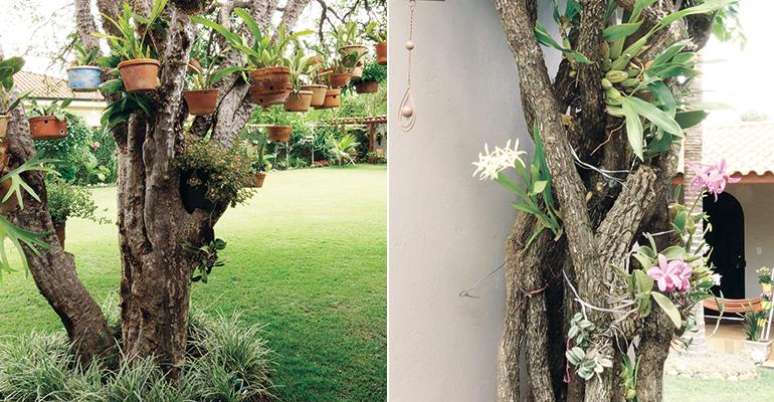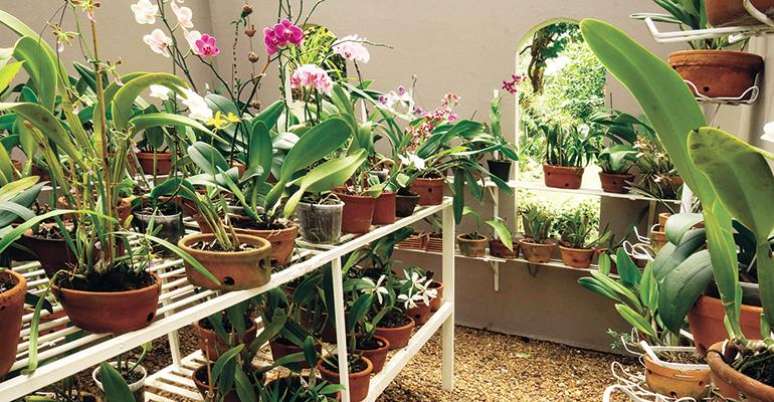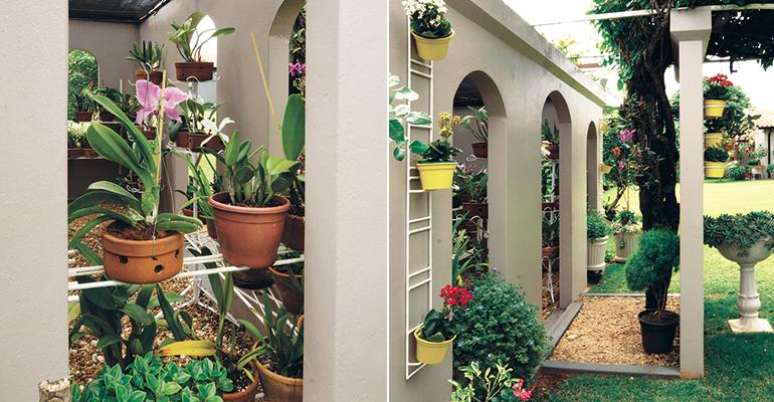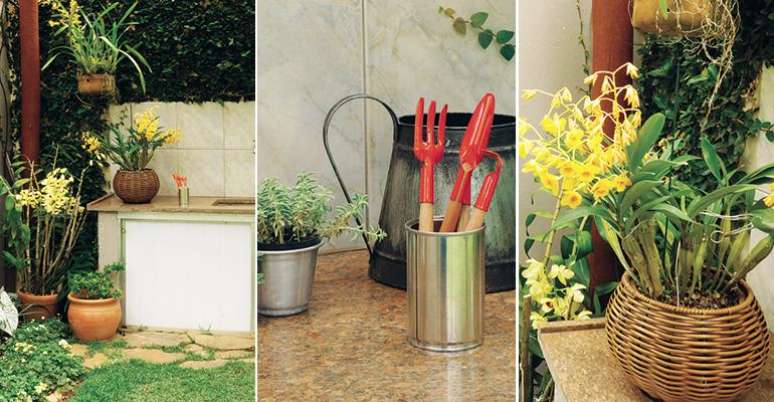With captivating colors and shapes, different species of orchids scattered on the trees and in the pots of this delightful house in the hinterland of São Paulo
In Maria Aparecida Caltran, from Santa Rita do Passa Quatro, SP, her passion for flowers was awakened by chance. “One day, my daughter came to visit me and she brought an orchid. I liked it so much that I decided to build an orchid nursery,” she says. At the time she went to the capital São Paulo to buy more plants and, even though she only had a corridor to call a garden – she lived in a smaller house -, she returned with a full car. Enthusiastic, he began taking courses and perfecting the art of cultivating the species. “12 years ago, when I moved to this address, my children built me the greenhouse,” he recalls. Today, with around 300 pots, Maria Aparecida dedicates herself to orchids at least twice a week. “Sometimes I wake up at 4:30 in the morning, just to give myself time to clean the house and then spend the day with my plants.”
Lots of love and constant care
The large grassy yard is framed by walls covered in easy-to-maintain cat’s claw vines.
In a small covered area the resident collects everything she needs to care for the plants. At the counter with the sink she cleans the pots, plants the seedlings and takes care of the species attacked by parasites. “In the wardrobe, just below, I keep vases, cloths, brushes and other accessories to keep my little flowers always beautiful,” she says.
It is also there that Maria Aparecida places the flowering orchids in cachepots that will decorate the interior of the house.
Rooting, watering, fertilizing… Consult the expert’s cultivation advice
Maria Aparecida loves to scatter her orchids in various places: tied or hanging from trees, in pots intended for the greenhouse and in other places directly on the ground. “I use every corner of the yard,” she says.
She gives advice for tying the flower to the trunk: “Tie the plant with a string, making several turns around the base. To stimulate the growth of the roots, the suggestion is to spray a specific product, such as Forth Enraizador, by Tecnutri do Brasil (Qualifertil, R$ 11.50 for a 60 ml pack), diluted at the rate of 5 ml per 1 liter of water, in the first watering”, he suggests. After five or six months, when the plant has already attached itself to the tree, it is time to remove the tie.
If the idea is to hang pots on the tree, choose those with three holes on the edge. “Insert a wire into each hole and, at the top, join the three together, forming a ring. Then, simply attach it with a hook to a branch,” he says. Another option is to purchase ready-made wire rods for this purpose.

In the greenhouse the specimens are supported on central (70 cm deep) and lateral (40 cm deep) shelves. Rolled cobblestones line the earthen floor, keeping the environment moist. Orchids do not like much sun, so the space (3 x 5 m) is covered in shade: this type of screen, which must be secured with wooden latches, only lets in 80% of sunlight.
Before planting, choose suitable pots. “The clay ones with the side holes are my favorites,” reveals the expert. The step by step is simple: he starts by filling the bottom with tile fragments; then add some macadamia bark and gently arrange the orchid. To support the plant, insert a stake (bamboo stick) into the tile fragments and tie the stem to it with twine or covered flat wire. Complete with other peels.

Avoid excess water. For most species, watering three times a week is sufficient. “Only Vanda is an exception: she asks for water three times a day in summer and once in winter.”

Another important treatment is fertilization. Maria Aparecida prepares a recipe with one scoop of NPK 4-14-8 mineral fertilizer, one of castor bean cake, one of bone meal and two of powdered egg shells (wash the shells, dry them in the sun and beat them in the blender). “Every two months I apply a spoonful of this mixture to the substrate, away from the bulb so as not to burn it,” she advises. If the orchid is trunk-bound, place the solution in a thin cloth bag over the seedling. “When it rains, it will get the nutrients.”
Source: Terra
Ben Stock is a lifestyle journalist and author at Gossipify. He writes about topics such as health, wellness, travel, food and home decor. He provides practical advice and inspiration to improve well-being, keeps readers up to date with latest lifestyle news and trends, known for his engaging writing style, in-depth analysis and unique perspectives.









